Kolam art is a traditional Indian form of floor drawing, especially popular in South India, that blends mathematics, symmetry, spirituality, and aesthetics. Here’s a detailed description:
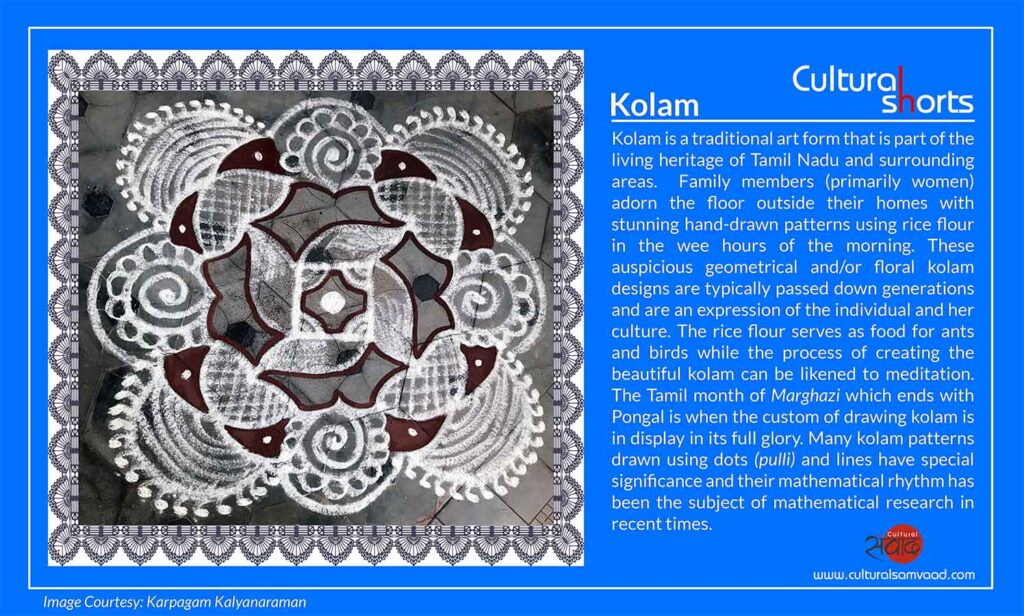
🌼 What is Kolam?
Kolam (also known as Rangoli in other parts of India) is a geometric line drawing composed of curves, loops, and dots, typically drawn at the entrance of homes using rice flour, chalk powder, or white rock powder. It’s a daily ritual in many Tamil households and has both artistic and cultural significance.
🌀 Key Features of Kolam Art:
- Dot Grid (Pulli Kolam): Many kolams are created using a grid of dots which are then connected with lines and loops.
- Symmetry & Precision: Kolams are often symmetrical and require a steady hand and concentration.
- Designs Range from Simple to Complex: From basic patterns made with a few dots to intricate designs with mathematical precision.
- Eco-Friendly: Traditionally made with rice flour to feed ants and birds—connecting art with sustainability.
- Seasonal and Festival Kolams: More elaborate kolams are made during festivals like Pongal, Diwali, or weddings.
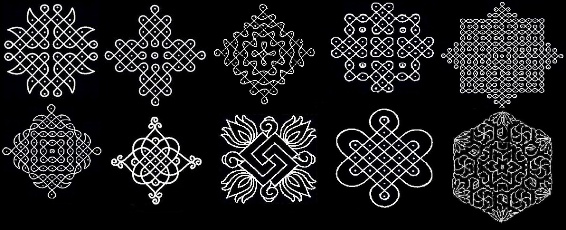
🪔 Cultural Significance:
- Auspicious Symbol: Thought to invite prosperity and ward off evil.
- Spiritual Practice: Drawing kolam can be meditative and is a symbol of welcoming positive energy.
- Daily Devotion: For many women, it’s a morning ritual to clean the entrance and create a kolam before starting the day.
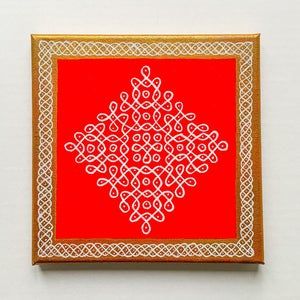
🎨 Types of Kolams:
Color Kolam: Enhanced with colored powders, especially during festival
Pulli Kolam: Made using a dot matrix.
Chikku Kolam: Lines woven around the dots in loops.
Freehand Kolam: No dots; drawn freely.
Sikku Kolam: Intricate “twisted” patterns with continuous lines.
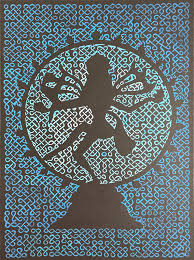
Nataraj Kolam Art:
In kolam art, the form of Nataraj—the cosmic dancer and a powerful embodiment of Lord Shiva—is brought to life using delicate and symmetrical line patterns. Nataraj is traditionally depicted dancing within a ring of fire, symbolizing the eternal rhythm of the universe, and this is artistically interpreted in kolam with flowing curves, loops, and intricate geometric designs.
A Nataraj kolam typically features:
- The Dancing Figure: Stylized with graceful lines, the form of Shiva is shown in a dynamic pose, with one leg lifted and arms spread rhythmically. The hair may be represented with flowing strokes, showing motion.
- The Circle of Flames (Prabhamandala): This encircles the dancer and is usually created with symmetrical arches, dots, or flame-like shapes to represent the cosmic cycle.
- Decorative Elements: Lotus motifs, mandalas, and other traditional kolam elements often surround the figure, adding layers of spiritual symbolism.
- Dot Patterns (Pulli Kolam): Some versions use a grid of dots to guide the pattern, creating a structured but fluid design that pays homage to traditional South Indian kolam techniques.
Drawing Nataraj as a kolam is more than just decoration—it’s a spiritual offering and an expression of rhythm, movement, and cosmic balance through the sacred geometry of the kolam tradition.
Rangoli as Kolam Art:
Rangoli and Kolam are both traditional Indian floor art forms, often used to decorate the entrances of homes, especially during festivals and auspicious occasions. Though they come from different regional traditions—Kolam from Tamil Nadu and Rangoli from other parts of India like Maharashtra, Karnataka, and Gujarat—they often blend beautifully in style and purpose.
When Rangoli is done in the style of Kolam, it combines the vivid colors of Rangoli with the symmetry and structured patterns of Kolam.
Meaning and Purpose:
Like all kolam and rangoli designs, the purpose is both aesthetic and spiritual—to welcome prosperity, ward off evil, and invite divine blessings. Drawing it is considered a meditative and devotional act, connecting the artist with tradition and the divine.
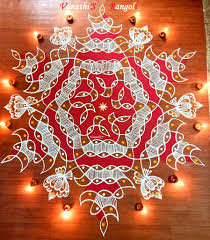
Meaning and Purpose:
Like all kolam and rangoli designs, the purpose is both aesthetic and spiritual—to welcome prosperity, ward off evil, and invite divine blessings. Drawing it is considered a meditative and devotional act, connecting the artist with tradition and the divine.
